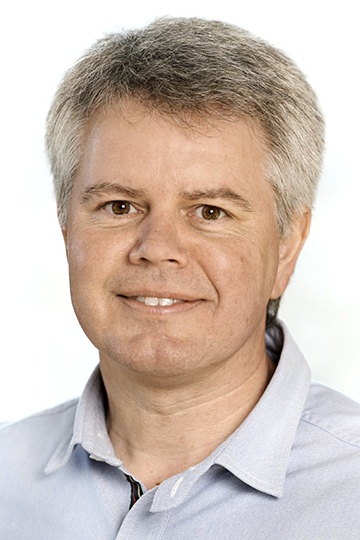 |
|
|
Quentin Vicens, FR
Peer instruction : General view and application to molecular life sciences
Institut de Biologie Moléculaire et Cellulaire, Université de Strasbourg, France
Ever wondered how to avoid always having the same few students answer your questions in class? or how to know on the spot whether they actually understand what you teach them? and how to adjust your lecture accordingly? Peer instruction as a pedagogy, combined with audience response devices (clickers) as a technology, will enable you to find some solutions to these issues, for small and large classes. During this presentation, we will explore how key concepts and main questions in life sciences benefit from being turned into thought-provoking and “challenging” multiple choice questions (clicker questions) that students discuss in class. We will practice “clicking” and making sense of the voting results that are displayed as bar graphs for everyone to see. Peer instruction is a research-based teaching strategy that promotes a transition from traditional lecturing to a flipped classroom, in which information acquisition happens mostly outside class, while active knowledge construction happens in class.
Biography
Quentin Vicens is a research associate at the CNRS in Strasbourg, France, and a faculty developer through his own company. His background is in the structural and molecular biology of RNA (PhD in 2002 from the University of Strasbourg). He promotes clickerbased peer instruction and the inverted classroom, two student-centered teaching strategies that work well within university settings.
|
 |
|
|
Michael E. Caspersen, DK
Getting more Scientists to Revamp Teaching -- Trojan Horses and Opportunistic Strategies
Despite extensive evidence in favor of student-centered teaching practices over traditional lecturing, most science faculty do not embrace novel and more effective modes of instruction. Over a period of five years, we have developed an opportunistic strategy to promote educational development. The three main ingredients are technology, sound teaching methods (grounded in educational research), and, last but not least, prominent peers. Recently, we have successfully used audience response systems (so-called clickers) and Peer Instruction as an ideal trojan horse for initiating a scientific teaching culture within a research environment. Currently, we are attempting a similar strategy to promote digital technologies to augment, modify, and redefine how we teach and how students learn.
Biography
Michael E. Caspersen is Director of Center for Science Education and Associate Professor in Programming and Programming Didactics at Department of Computer Science, both at the Faculty of Science and Technology at Aarhus University, Denmark.
|
 |
|
|
Neil Morris, UK
Using technology to engage with students
Digital technologies have matured rapidly over the past five years, and are commonplace in many sectors which affect our daily lives. In the Higher Education sector, digital technologies are still seen as an add-on to the learning experience, and are not always an integral and accepted part of the teaching and learning process. Many universities have developed e-learning or digital strategies to address this, and are now beginning to develop infrastructure and processes to deliver these. The session will explore the adoption of digital technologies by staff and students, the impact on the teaching and learning process and the impact on student learning and experience. The aim of the session is to illustrate the benefits of a strategic approach to integrating digital technologies into a blended learning curriculum for staff and students, and to demonstrate the positive impact digital technologies can have on student learning and engagement. During the session, examples from projects in the following areas will be used: mobile learning with tablet devices, Massive Open Online Courses developed for Futurelearn, Open Educational Resources created for iTunes U and YouTube, lecture capture and multimedia management and other online resources and approaches.
Biography
Professor Neil Morris is Chair of Educational Technology, Innovation and Change in the School of Education and the Director of Digital Learning at the University of Leeds, reporting directly to the Pro-Vice Chancellor for Student Education. He is a National Teaching Fellow, and has won a number of national awards for teaching excellence. Neil has a research background in neuroscience and current research interests in educational technology, online learning and blended learning. He has conducted a number of published research studies on the impact of mobile technologies on student learning and engagement and he is the co-author of Study Skills Connected, a successful textbook on using technology effectively to enhance learning (Palgrave MacMillan). Neil has led a number of strategic technology projects at Leeds, including MOOCs for FutureLearn, lecture capture, Open Educational Resources, Virtual Learning Environment and student response handsets. In his current role, Neil has strategic and operational responsibility for the Digital Learning Team which is responsible for the University's iTunesU site and delivering MOOCs for the FutureLearn platform. Neil has authored a number of strategies and policies for the University, including the Digital Strategy for Taught Student Education, the Blended Learning Strategy, the Audio and Video Recording policy, the MOOC vision and strategy and the Open Educational Resources policy. Neil has given a number of keynote talks at UK and international events, and is a regular speaker at conferences.
|








